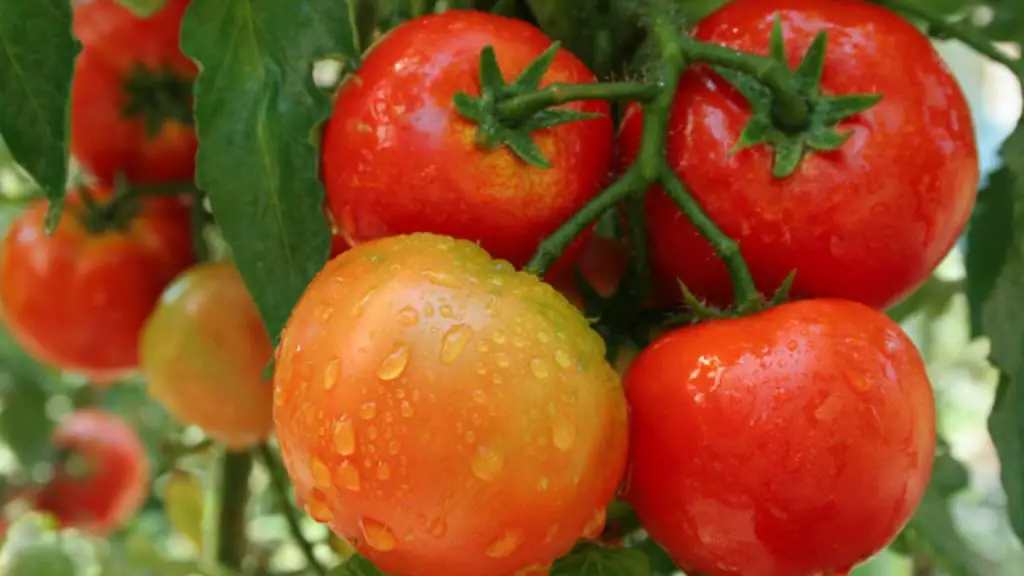There’s nothing quite like biting into a fresh, juicy tomato that you’ve grown yourself. But how long does it take for tomatoes to grow, from seed to harvest? Depending on the variety of tomatoes, it can take anywhere from 55 days to over 80 days.
So, if you’re looking to add some homegrown tomatoes to your next summer meal, be sure to start planning now!
What Kind Of Tomatoes Should You Plant?

Tomatoes come in many different varieties, and each variety has its own strengths and weaknesses. For instance, some tomatoes are better suited for canning or preserving, while others are ideal for fresh eating.
When deciding what kind of tomatoes to plant, it is important to consider what you will be using them for. If you plan on canning or preserving your tomatoes, look for varieties that are high in acidity and have lower water content. These tomatoes will be less likely to turn mushy during the canning process.
If you want to grow tomatoes for fresh eating, however, look for varieties that are high in sugar and have more delicate skin. These tomatoes will be more fragile, but they will also be more sweet and flavorful. No matter what your purpose is, there is sure to be a tomato variety that is perfect for you.
How Long Does It Take For Tomatoes To Grow?
Tomatoes are a warm-weather crop, so they need at least six to eight hours of direct sunlight each day in order to produce fruit. They also need well-drained, nutrient-rich soil and consistent watering in order to thrive.
Most tomato varieties will take about 70 days to mature, although there are some “early season” varieties that can be harvested in as little as 50 days. Once the plants have flowered and the first fruits have set, you can expect to see ripe tomatoes within a few weeks.
However, it’s important to resist the temptation to harvest too early. Immature fruits will be smaller and less flavorful than those that are allowed to ripen fully on the vine. With a little patience, you’ll be able to enjoy homegrown tomatoes at their peak of flavor.
How Deep Do You Plant The Tomatoes And How Wide Apart Should They Be Spaced In The Ground?
Tomatoes are a versatile and delicious addition to any garden, but they can be finicky when it comes to planting. If you want to ensure a healthy crop of tomatoes, it’s important to plant them at the proper depth and spacing.
Tomatoes should be planted deep, with the entire stem buried except for the top few leaves. This allows the plant to develop a strong root system, which will support the plant as it grows and produces fruit. You’ll also need to space your tomato plants at least two feet apart. This allows the plant room to grow and spread its roots without competition.
With a little care and attention, you can enjoy a bountiful crop of delicious tomatoes. Just be sure to plant them deep and give them plenty of space to stretch their roots.
Type Of Soil That Is Best For Growing Tomatoes
Tomatoes are a popular fruit that is enjoyed by many people around the world. They are commonly used in salads, sandwiches, and as a topping on pizzas. Tomatoes grow best in warm climates and require at least six hours of sunlight per day. The type of soil that is best for growing tomatoes is sandy loam soil.
This type of soil is well-drained and has a high amount of organic matter. Sandy loam soil is also loose and airy, which helps the roots of the tomato plant to breathe. In addition, this type of soil retains moisture well, which is essential for tomato plants.
Tomato plants also require regular watering, especially during the hot summer months. If you are planning on growing tomatoes, be sure to choose a location that has sandy loam soil.
How Much Water Do Tomatoes Need?
Many factors affect how much water tomatoes need, including the type of tomato, the climate, and whether the plant is determinate or indeterminate. In general, however, tomatoes need about an inch of water per week. Water deeply and less often to encourage deep roots, and be sure to avoid getting water on the leaves to prevent disease.
Mulching can also help to retain moisture and prevent weeds. Try to monitor your tomatoes closely to get a sense of how much water they need based on the conditions in your garden.
And remember, it’s better to err on the side of too little water than too much – over-watering can lead to problems like blossom end rot. With a little attention, you can ensure that your tomatoes get just the right amount of water to thrive.
Some Common Problems That Occur With Tomato Plants And How Do You Fix Them
Any gardener knows that tomatoes are a tricky plant to grow. One minute they’re thriving, and the next they’re wilting. To tomato gardeners everywhere, we feel your pain. Here are some of the most common problems that occur with tomato plants, and how to fix them.
One common problem is blossom end rot. This is when the bottom of the tomato turns black and rots. The cause is a lack of calcium in the soil. To fix this, add lime to the soil to raise the pH level and make calcium more available to the plant. Alternatively, you can use a calcium supplement like bone meal or gypsum.
Another common problem is magnesium deficiency. This manifests as yellow leaves with green veins. The fix is to add Epsom salt (magnesium sulfate) to the soil. You can also spray the leaves with a solution of 1 tablespoon of Epsom salt per gallon of water.
Last but not least, there are tomato hornworms. These voracious pests can strip a plant bare in no time flat. If you see them, handpick them off and drop them into a bucket of soapy water. You can also try using Bacillus thuringiensis (BT), a naturally occurring bacteria that kill hornworms. Just be sure to get the kind that’s specifically labeled for tomato plants.
With these tips in mind, you should be able to successfully grow healthy tomatoes all season long!
Additional Contents



